The Legend of Zelda 25th Anniversary - A Look Back
GameSpot editors celebrate The Legend of Zelda's 25th anniversary by taking a look back at some of their favorite games in the series.
There are no other game franchises like The Legend of Zelda. Now celebrating its 25th anniversary, the series has not only endured, but it has also thrived in the face of a rapidly changing gaming landscape. We asked a few of the GameSpot editors to pay tribute to this milestone by picking their favorite Zelda games and speak to their personal significance. Join us as we take a look back and let us know what your favorite Zelda game is in the comments below.

Tom Mc Shea - The Legend of Zelda
"Exploration and discovery are the tenets upon which Nintendo built this legendary series. Once you push past the title screen and select the name of your hero, you're placed in a world without any immediate goal spelled out for you…" Continue

Carolyn Petit - The Legend of Zelda: Link's Awakening
"However, as you aid Link on his quest to return to his homeland, your experiences take on an increasingly surreal feeling, and it eventually becomes clear that this isn't just another typical adventure for Link…" Continue

Peter Brown - The Legend of Zelda: A Link to the Past
"As gamers clamored for the return to the original Zelda's style of play, I can imagine that this immersive approach to storytelling was the icing on the 16-bit cake for a lot of people. Great as the original was, it was sorely lacking in the character development department…" Continue

Giancarlo Varanini - The Legend of Zelda: The Wind Waker
"Others, notably the series' most zealous fans, treated it as the greatest betrayal of their lives. "Cat face," "Celda," "Baby Link," "teh kiddy," and the like were the lightest of the derisive phrases to stab Nintendo's new portrayal of one of its oldest heroes…" Continue
The Legend of Zelda

Nintendo got it right the first time.
Alone in the wilderness, a young boy sets off on what promises to be an epic adventure. There's no narrative that tells you as much--but you can feel it. The music worms its way into your head, urging you on; there is a sense that something magical awaits around the bend. Without any tips destroying your sense of immersion or sign posts beckoning you in the right direction, The Legend of Zelda communicated what it demanded with confidence: explore. There's no telling what's waiting around the corner--it could be a gang of moblins hungry for elf flesh or a precious key to unlock a mysterious door--and there's only one way to find out.
Exploration and discovery are the tenets upon which Nintendo built this legendary series. Once you push past the title screen and select the name of your hero, you're placed in a world without any immediate goal spelled out for you. Three paths lay before you, but there's something about the cave directly in front of your sights that's too enticing to ignore. You take a few tentative steps, realize there's no forthcoming danger, and then sprint the rest of the way to see what awaits you. An old man sits by himself. "It's dangerous to go alone; take this." You grab the sword and begin the journey proper.
It's this simple idea that ultimately set the tone for the incredible adventure in store for you. By forcing you to enter that cave to get your first weapon--instead of just starting the game with it already in your inventory--Nintendo concisely explained the rules of this world. Nothing will be handed to you in The Legend of Zelda. To survive this dangerous land, you have to experiment. You have to travel down dark paths and hunt in unlikely places. If you aren't up to the task, just give up now because it's only going to get harder from here.
There's a level of respect a company must have for its players if it's going to issue such a serious request. The Legend of Zelda is not an easy quest by any stretch. If you veer to a dangerous part of the map, you could see your entire life drained away with just one hit. But there's no way to know which places are dangerous until you experience firsthand what challenges lay there. It's a sink-or-swim approach to game design that is infinitely rewarding but only if you can overcome the setbacks that could strike you down when you make a mistake.
There's a sense of wonder that's present in the original Zelda that is largely absent from modern game design. Failure was not only possible; it was likely. Not only were precious heart containers and valuable treasures hidden behind walls that needed to be bombed, but entire dungeons were also just as difficult to uncover. There's no flying fairy to tell you which bush to burn if you want to enter the seventh dungeon. In fact, because that is the only dungeon in the main quest that's hidden in such an obtuse manner, you may never realize that you would need to summon your inner pyromaniac to continue your journey.
It's easy to understand why Nintendo took a more user-friendly approach in subsequent releases. If you grew up in the '80s and played The Legend of Zelda before the Internet made secrets a thing of the past, you no doubt got stuck in more than a few places. It was a large deterrent for the easily annoyed. More than a few people most likely threw down the controller with disgust and ran back to the safe, linear comforts of Mario. But a huge part of the appeal of Zelda is that it taps into one's innate need to explore his or her surroundings. It may take days or even weeks to happen up the fifth labyrinth in the lost hills, but when that magical chime cues up and you see the gaping maw of the entrance, you feel as if you accomplished something real because, in fact, you did.
Current-day entries in this series compensate for their direct approach to progression by sprinkling puzzles throughout the many dungeons. This is an element that is largely absent from the original, though it doesn't hinder the experience one bit. Survival in The Legend of Zelda is a constant fight between good and evil. To make it through the later labyrinths is to survive a dance with some of the most punishing enemies. There was no time to solve logic puzzles when merely making it from one room to the next was a trial in and of itself. Once you finally crossed the river and made your way to the sixth labyrinth, you happened upon an underground world that was focused entirely on your demise. Vanishing wizards, shield-eating like-likes, and those crazy balls that leave you swordless surrounded you from all sides. There was no easy way out in these later levels, and reaching the end intact was a triumph.
It's easy to look back at the Legend of Zelda and assume it's archaic by modern standards. With barely any narrative to speak of, decidedly old-school visuals, and only the flimsiest of structures, it can't hold a candle to what current games offer. When you throw in the devious level design that some might label "unfair," you may appreciate what this game accomplished but also smile that things have moved past this directionless endeavor.
But change is not always for the better.
The Legend of Zelda games have become more complex, but in doing so, they've also become simpler. No longer do you set forth across unexplored lands without any idea of where you have to go. No longer do you find reward simply from uncovering a lone secret path. The tangible benefits in the newer games and the constant need to cross another item off of your to-do list destroy the inherent pleasure of existing in a strange land and slowly making it your own. As brilliant as newer games in the series are, they've become a shadow of what they were at one time.
Twenty-five years after The Legend of Zelda was first released, it still stands as a template for how to build an adventure around exploration and discovery. Without a lengthy story or drawn-out cutscenes, Nintendo created a fantastic world that urged players along because the act of finding something new was reason enough to keep playing. The Legend of Zelda is not only the pinnacle of this beloved franchise, but it also still stands as one of the most ambitious, empowering, and extraordinary games ever released.
The Legend of Zelda: Link's Awakening

"SEA BEARS FOAM, SLEEP BEARS DREAMS, BOTH END THE SAME WAY…CRASSSH!"
These ominous words are spoken by one of the owl statues that dot the mysterious Koholint Island. Link has washed upon the shores of this isle, and at first, it seems to be just another place like Hyrule, peppered with dungeons and monsters but existing in the same world. However, as you aid Link on his quest to return to his homeland, your experiences take on an increasingly surreal feeling, and it eventually becomes clear that this isn't just another typical adventure for Link. Yet, for all of the dreamlike qualities that pervade Link's Awakening, this is still a game that exemplifies the qualities that made the Zelda games so great: rewarding exploration, challenging dungeons, and the thrilling sensation that you are an archetypal hero of legend on an archetypal quest.
Dreams are a constant theme in Link's Awakening. It's fitting, then, that the game feels like something of a dream itself--a Zelda game as directed by David Lynch. Perhaps it's because Link's Awakening began as an unsupervised, after-hours side project by a small group of Nintendo staff members. But for whatever reason, there's a feeling of playfulness and experimentation to it that you just don't see in most Zelda games. Here, Nintendo games bleed into each other. A resident of Mabe Village keeps a pet chomp chained up outside of her house. Side-scrolling sections frequently pop up in dungeons, and with the presence of goomba-like creatures to stomp and thwomp-like rocks that block your path, these sections owe more to the early Super Mario games than to Zelda II: The Adventure of Link. Other Nintendo characters, such as Kirby and SimCity's Dr. Wright, also have incarnations in this surreal world. And it's probably the only Zelda game in which you encounter a friendly hat-wearing anthropomorphic alligator.
What is the nature of this world? Why do the bosses of some dungeons (which are called nightmares here) sometimes warn you that your quest will destroy Koholint Island? Are you unwittingly playing the role of the villain? Link's Awakening doesn't dwell on these questions; it simply places them in your path and invites you to ponder or ignore them. But their mere presence is enough to give this adventure a melancholy tinge, and the poignant ending touches on how all things must come to an end, as well as what dreams leave us with once we awaken. (By the way, one of the bosses looks like a scary clown spirit, and aren't clowns the stuff of everyone's nightmares?)
By the time you reach that ending, you feel as if you've been on an epic and challenging adventure. The dungeons you must conquer here start out easy enough, but eventually, they become some of the most challenging in the series. You need to make sense of cryptic clues (Just what does that owl statue mean when it tells you, "Enter the space where the eyes have walls…"?) and navigate disorienting layouts, which often remain puzzling even after you've found the map. You may even have to resort to that outdated tradition that video game players of the distant past often engaged in: taking notes. With the many monsters, switch puzzles, and other familiar elements you encounter, these dungeons fit snugly into the mold established by earlier Zelda games. But they also stand apart, as a result of the occasional side-scrolling sections and some objectives that are unlike those in any preceding dungeon in the series. In the Eagle's Tower, for instance, you must carry a huge orb to certain rooms and throw it into pillars to bring the upper level of the dungeon crashing down.
But even the most traditional dungeons in Link's Awakening are rewarding to overcome because your life is always in danger. The enemies that infest these ancient labyrinths are deadly, and one false move can take you from a hale and hearty hero to one with scant few hearts remaining. The combination of deadly monsters and puzzling layouts may sometimes make you want to throw your hands up in frustration, but pressing on is worth it. Surviving these dangers and emerging from a dungeon with both your life and a new item is rewarding because that victory is sometimes a hard-earned one. And with those new items--a feather that lets you jump, a power bracelet, flippers, a hookshot--you can explore more of the world. And as in all of the best Zelda games, there's pleasure in discovering what's over that ridge or beyond those rocks you couldn't get past before.
Link's Awakening is surprising and wonderful in the way it combines these most traditional and defining elements of the Legend of Zelda series with a sense of experimentation and whimsy. It's beautiful in the way that it slowly peels back the curtain on the secret of its world and in the way that characters and elements of other Nintendo games often drift into this one. If Nintendo had a soul that was capable of dreaming, this is what its dreams might look like.
The Legend of Zelda: A Link to the Past

The game that birthed a franchise, The Legend of Zelda, represented the refinement of solid gameplay fundamentals. Even in Nintendo's early years, Shigeru Miyamoto crafted a style and pace of gaming that modern developers still struggle to achieve. He took the best elements of action, adventure, and puzzle games and created a product that appealed to gamers everywhere. It was one of the earliest console games with a truly open world, bursting at the seams with secrets to discover and challenges to overcome. It didn't hurt to have a valiant protagonist, forging into darkness with the light at his back. Nintendo wasn't bluffing when it presented it in gold cartridges, either. Had it been a lesser game, the choice might have come off as misguided overconfidence.
The follow-up game, The Adventure of Link, took a decidedly different approach. The top-down view was relegated to a world map, which was a decision that tarnished one of the elements that made the first game so successful. To make matters--let's say, slightly more vexing--Nintendo opted to present action sequences in a side-scrolling format. For Mario's sake, Link could even jump! That may be something we long for in a modern Zelda game, but it felt wrong, nay, dirty, in the direct follow-up to The Legend of Zelda. In short, The Adventure of Link wasn't even remotely similar to the first game, and in most people's eyes, it barely deserved the silver-cartridge treatment.
It would take three more years before gamers would get to play another Zelda game, and the sour taste in their mouths from the last one nearly overshadowed the legacy of the original game. It came as a pleasant surprise to Nintendo fans when it was revealed that the third game would appear on the SNES and triumphantly return to the original style of play. Fans were already seething for a 16-bit system from the sidelines, as they watched the Sega user base have all the fun. What Nintendo gave us was nothing short of amazing. The gameplay that worked so well in the past was back, and fans could all but forget about the blemish that was The Adventure of Link.
Before pressing start, the introduction sequence serves as your briefing to the story at hand. There was a legendary Golden Power sought out by warrior and adventurer alike. All who sought the power failed, and soon, evil began to take hold of the land. To protect his kingdom, the King of Hyrule ordered seven wise men to seal the entrance. As ages passed, and the tale began to fade into obscurity, the evil wizard Agahnim sought to seize the Golden Power. To do so, Agahnim tracks down the descendents of the wise men to end their bloodlines and dissolve the seal.
After deposing the King of Hyrule, the princess Zelda became his next target. Held captive in the castle's dungeon, she telepathically calls out to Link in a fit of desperation. His uncle leaves for the night and instructs Link to stay at home. Against his uncle's wishes, he heads for the castle, incapable of ignoring the cries for help. He finds his uncle in the dungeon dying in front of his eyes. Having been a part of the resistance to Agahnim, Link's uncle did his best not to involve him in such a perilous fight. With no options left, he hands over his sword and shield to Link and instructs him to finish what he could not. With his final breath, he tells him, "Save the princess. Zelda is your…"
The amount of time between the start of the game and this mysterious utterance is brief, but this blip of storytelling contains numerous devices to lure the gamer into the conflict and storyline. Legends of forgotten powers and ancient wise men invigorate the adventurer in us, while the death of a loved one and the cries of a helpless maiden pluck at our emotional strings. On top of that, we learn that the hero has a mysterious connection to the maiden that is worthy of a dying man's final breath. If you aren't incensed and driven to rescue Hyrule and the princess at this point, check your pulse. You might be: A) Dead or B) Not human.
As gamers clamored for the return to the original Zelda's style of play, I can imagine that this immersive approach to storytelling was the icing on the 16-bit cake for a lot of people. Great as the original was, it was sorely lacking in the character development department. The intro was essentially as follows: The evil Gannon possesses one part of the triforce. Zelda held a second piece but broke it up into eight segments to hide it from Gannon. She is now held captive, and you must reassemble the eight pieces to save her from Gannon. Good luck!
Not to sound like an a**, but why should Link even care about Zelda? There is no defined connection between them and no mention of any threat to the land of Hyrule specifically. Granted, these elements are present in the story at large, but you have little vested interest at the start. You are essentially plopped in front of a cave with an old man and a sword inside. The word "paltry" comes to mind. Not to knock its quality, which was admirable at the time. It's just a testament to the improvements made in A Link to the Past.
Much of this is due to the involvement of Shigesato Itoi, who created Earthbound, but contributed on many Miyamoto games in the late '80s and early '90s. In an interview from 1989, recently transcribed by Game Staff List Association Japan and translated by Siliconera, Miyamoto admits that developing stories for his projects was never one of his strong suits. Gameplay, specifically action, was always at the forefront of his mind. Itoi was charged with creating a compelling story to balance out the action-centric design. Growth within the series, in that respect, can be credited almost single-handedly to Itoi's involvement.
If there were ever a reward for the best rebirth of a series, A Link to the Past would be a shoo-in for the top slot. The gameplay was solid and packaged in a beautifully drawn 2D world. It excelled over its predecessor and improved on the game that inspired it. With a dual-world system that served as a means to lengthen the overall experience, it was one of the most complete packages ever produced for the SNES. The sense of adventure and joy that came from unlocking the secrets of Hyrule were only second to Miyamoto and Itoi's craft. It defined a level of quality early in the system's life span that would rarely, if ever, be equaled.
The Legend of Zelda: The Wind Waker

Imagine the atmosphere at Space World 2001, Nintendo's former annual press event that highlighted upcoming hardware and projects. The incredible success of The Legend of Zelda: The Ocarina of Time drove the franchise's popularity to frantic levels, and though Majora's Mask was released less than a year before this particular conference, fans were clamoring for a proper follow-up to Link's first journey into 3D. Nintendo stoked the anticipatory flames a year earlier at Space World 2000, where it revealed a GameCube technical demo of a highly detailed, Ocarina-inspired Link and Ganon engaged in a supremely impressive battle.
It was the Zelda that fans wanted. It was the one they thought Nintendo was going to unveil at Space World 2001. It was the Zelda they wouldn't get.
Instead, on that massive screen inside the convention hall, attendees saw The Legend of Zelda step into a completely new realm of visual expression. Indeed, the ostensible realism ushered in by The Ocarina of Time faded into memory as one of the Nintendo 64's finest moments when a face that was familiar but different took center stage; a face that was simultaneously applauded and completely reviled. Then GameSpot editor Shane Satterfield described it as "the closest thing to a moving 3D cartoon yet seen on a console." Others, notably the series' most zealous fans, treated it as the greatest betrayal of their lives. "Cat face," "Celda," "Baby Link," "teh kiddy," and the like were the lightest of the derisive phrases to stab Nintendo's new portrayal of one of its oldest heroes.
A number of relatively minor tweaks to Link's new look during the next several months diluted the vitriolic spew that came from the gaming populace, but the collective ire of Zelda fans never faded, even after Wind Waker's release in 2003. It lingered in the background, hissing at Nintendo for not following through on the Link the audience demanded from the GameCube tech demo. Years later, Nintendo eventually threw up its hands and relented and Twilight Princess was born. It delivered--in essence--the "grown-up" version of Ocarina of Time and not only dealt the final blow to the Wind Waker's visual treatment of Hyrule, but it also served as some odd admission of guilt that Nintendo did something wrong.
But it didn't. The Wind Waker's visual style was more than just cel-shading. It was the natural creative progression in a series that relied so heavily on sound and music to convey emotion because its visuals simply couldn't do so in any profound way. The Ocarina of Time reached the limits in that regard, and that's one of the reasons it's often seen as one of the greatest games ever created. Its musical themes were so effective in picking up the emotional slack and setting the mood in a way that created details beyond the rudimentary polygonal models on display. The strumming of guitars in Gerudo Valley or Talon's gentle warble at Lon Lon Ranch are but a few highlights.
The Wind Waker was the series' first opportunity-- in a 3D space--to use visuals that equaled and complemented the audio on an emotional level, and that's due in part to its style being completely unrealistic. Link's facial features were simple. There wasn't much to him outside of a simple pair of eyes, eyebrows, and a mouth, but the lack of detail also let us fill in the blanks and read more into his expressions and his emotions than we normally would have. This also created an opportunity to project our own emotions onto Link because they weren't necessarily laid bare with an outrageous level of detail that produced distracting, uncanny valleylike symptoms. The first few moments of Wind Waker where Link meets with his sister and waves goodbye to his island family are some of the most endearing sequences in the entire series, and it's not because of voice acting or a rousing orchestral score. It was pure emotion.
The Wind Waker's aesthetic was one of The Legend of Zelda's greatest accomplishments, but its controversial beginnings and the general lack of acceptance from so-called fans have all but doomed chances for that visual style to return in console form. And if Nintendo has seemingly learned anything from this experience, it's that The Legend of Zelda has fallen victim to its own success.
Got a news tip or want to contact us directly? Email news@gamespot.com
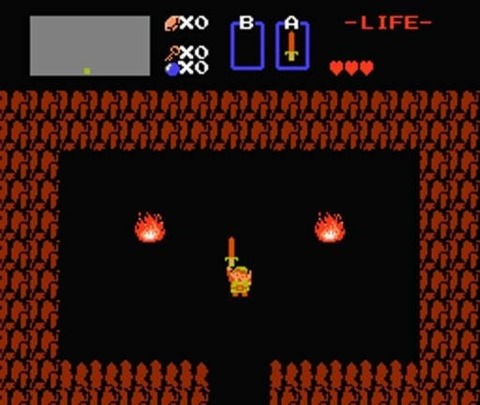
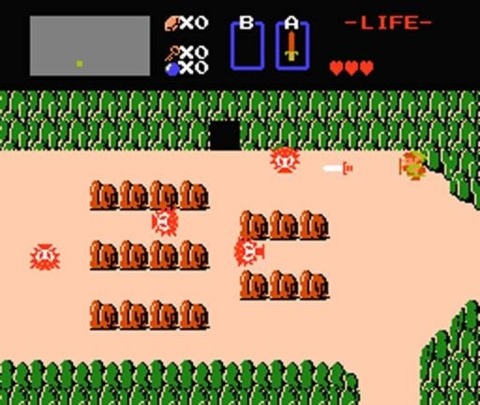
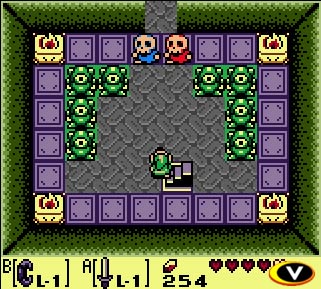
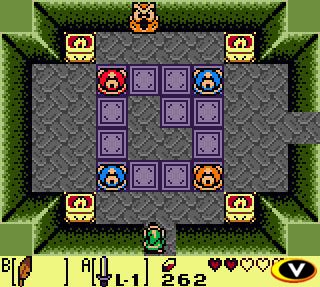

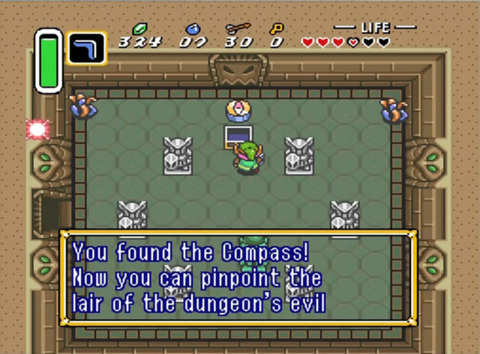

Join the conversation